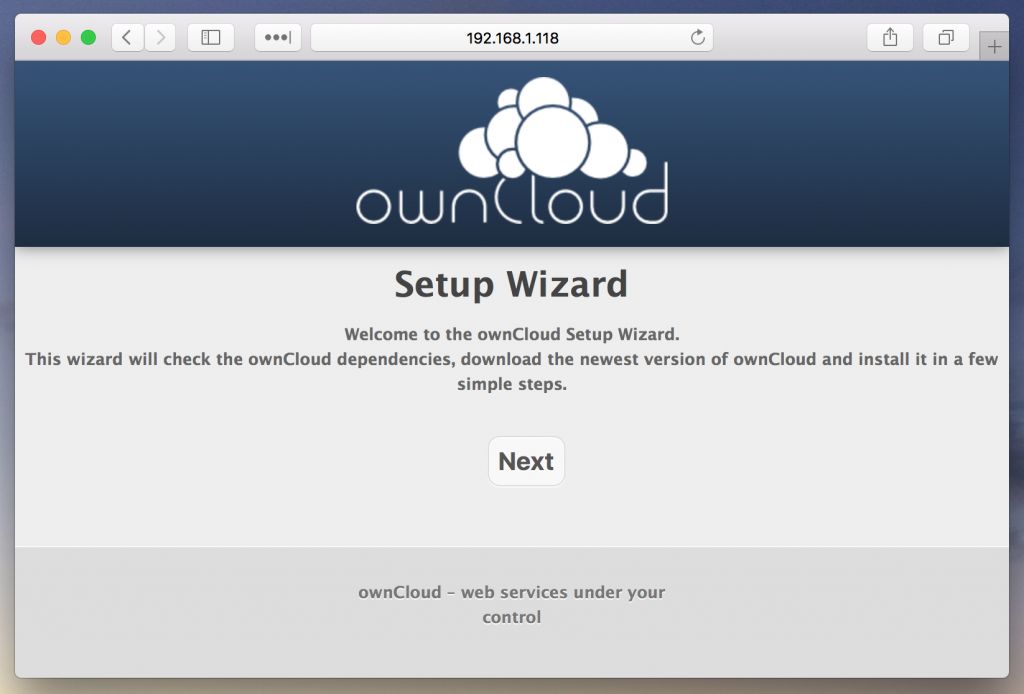

- #Build owncloud server how to#
- #Build owncloud server install#
- #Build owncloud server update#
- #Build owncloud server mods#
The first major hurdle to using a Kubernetes cluster to self-host your Minecraft server is figuring out how to dockerize a Minecraft server process. Role-based access control (RBAC): While playing on a personal server, you have more robust control over user access and can set role-based access control.Īnd, while hosting your own Minecraft server is not a new concept, there are a few hurdles you’ll face when you get started using Kubernetes to deploy a Minecraft server.
#Build owncloud server mods#
Check out some of those mods on CurseForge here. Mods: By self-hosting, you can add mods to your server, allowing for various quality-of-life improvements, increased gameplay depth, and new experiences.Custom rules: Hosting your own server allows you to customize your game experience, as opposed to running the stock game on your local machine.

Why would you want to self-host your own Minecraft server?īefore we dive into the technical details of how this works, it’s worth explaining the advantages of hosting your own Minecraft server. While it may not be the most cost-effective way to do this if it lives by itself on a Kubernetes cluster, a Minecraft server can be a fun addition to a project or company’s Plural stack. While that is still our primary focus and our most common use case, we did consider there are plenty of things that developers may want to self-host, such as video games with server-side components. You can confirm that it is ready to use by pointing your web browser to your ownCloud installation.When we initially set out on our journey to empower people to host their own applications, we focused on core infrastructure and useful tooling. Make sure the permissions are correct cd /var/www/ value '' \Ĭonfigure Log Rotation FILE="/etc/logrotate.d/owncloud" Occ config:system:set trusted_domains 1 -value="$my_ip"Įcho "*/15 * * * * /var//var/spool/cron/crontabs/www-dataĮxecute these commands: occ config:system:set \
#Build owncloud server install#
Install ownCloud occ maintenance:install \Ĭonfigure ownCloud’s Trusted Domains my_ip=$(hostname -I|cut -f1 -d ' ') Mysql -u root -e "CREATE DATABASE IF NOT EXISTS owncloud \Įnable the Recommended Apache Modules echo "Enabling Apache Modules"Ī2enmod dir env headers mime rewrite setenvif Installation Configure Apache Change the Document Root sed -i "s#html#owncloud#" /etc/apache2/sites-available/nfĬreate a Virtual Host Configuration FILE="/etc/apache2/sites-available/nf"Įnable the Virtual Host Configuration a2ensite nfĬonfigure the Database systemctl start mariadb Install the Recommended Packages apt install -y \ Install smbclient php module apt-get install -y libsmbclient-dev php-dev php-pearĮcho "extension=smbclient.so" > /etc/php/7.4/mods-available/smbclient.ini Install the Required Packages apt install -y \ Sudo -E -u www-data /usr/bin/php /var/www/owncloud//occ the helper script executable: chmod +x /usr/local/bin/occ
#Build owncloud server update#
To do so, follow the instructions below: apt update & \Ĭreate the occ Helper Script FILE="/usr/local/bin/occ"

A fresh installation of Get Ubuntu Server | Download | Ubuntu.Run the following commands in your terminal to complete the installation. This is a short guide to installing ownCloud on a fresh installation of Ubuntu 20.04. Install ownCloud on Ubuntu 20.04 Introduction


 0 kommentar(er)
0 kommentar(er)
